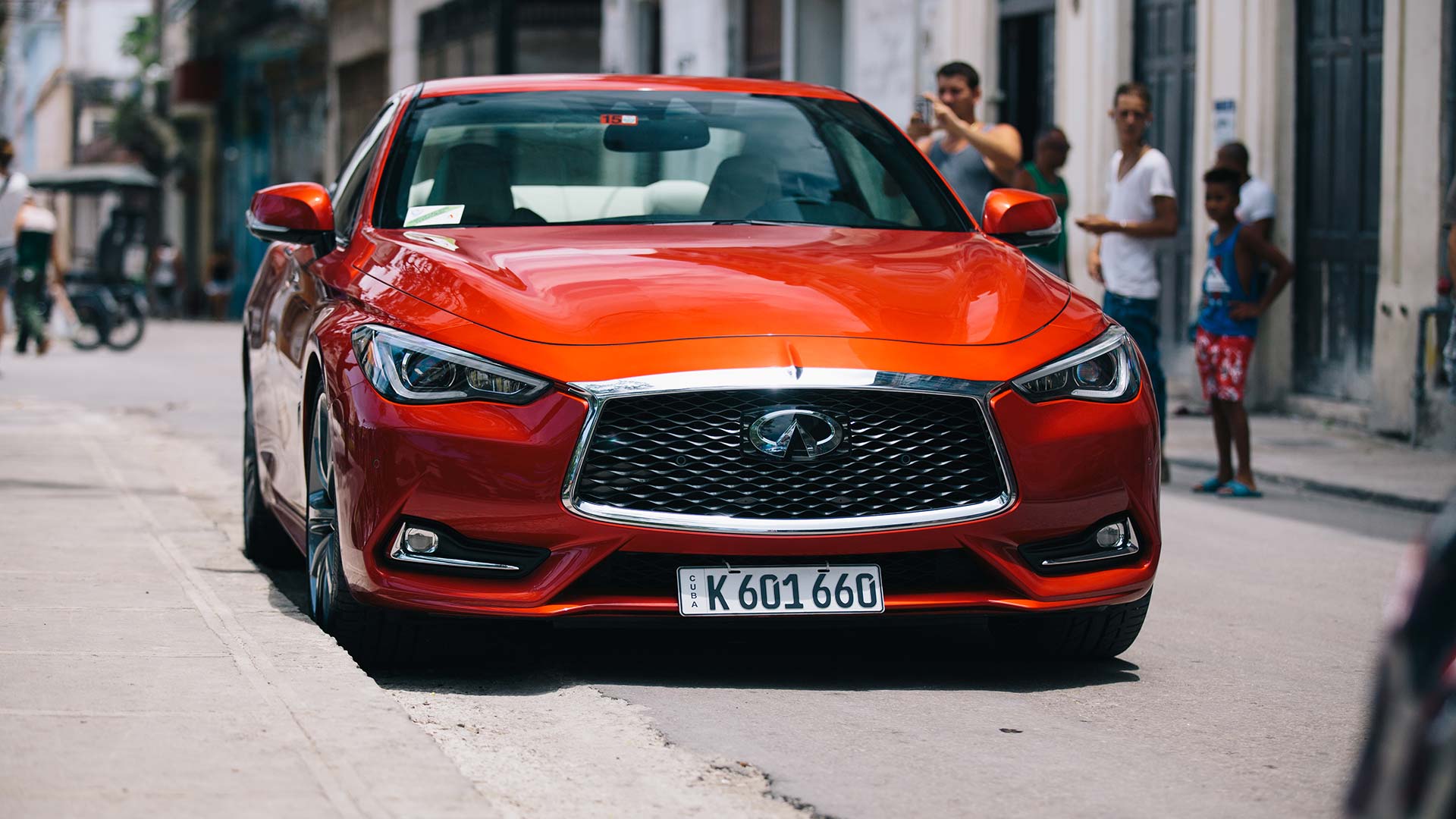We may earn revenue from the products available on this page and participate in affiliate programs. Learn more ›
The week’s manifest called for the delivery of something called the “2017 Infiniti Q60 Red Sport 400.” I had no idea what that was; since Infiniti changed their car-numbering system a few years ago without asking whether or not we wanted that to happen, there’s really no way to determine what’s what in the Infiniti lineup until you actually see the vehicle. Even then, I suspect that they’re constantly shuffling names and numbers around just to mess with us. I could have Googled the Q60 RedSport 400, but I prefer to be surprised when the car appears in my driveway, like a teenage buppie in a Salesathon ad. I suspected it would be a big, ugly SUV, like most cars have become.
But instead, the Q60 turned out to be a magic slipper with only two doors, and a 3.0-liter, twin-turbo V6 with direct fuel injection, generating 400 horsepower and 350 lb-ft of torque. Sometimes I’ll let the cars sit for days before I get into them, but I was on this one immediately. It was fast and light and aggressive, and had a gorgeous white leather interior that was a nice change from the usual black-and-red imperial interrogation-room décor that most sports models deploy. This was the rare car that made me want to drive.

And then I noticed: I wasn’t really driving, at least not entirely. It was almost impossible for me to not be centered in my lane. If I took a corner too fast, which was very easy to do in this machine, the car always righted itself perfectly and immediately. The steering system almost seemed sentient.
Since it’s been a few years since I took a steering technology seminar, I emailed Infiniti to ask them what in the world was going on. Here’s what I got from their highly unbiased communications department: I was driving the world’s first car with steer-by-wire Direct Adaptive Steering™. This technology, they told me, first appeared in the four-door Q50, but this one has a completely different calibration than the sedan’s. It allows for the driver to custom tailor steering ratios, response times, and effort, and also allows for the use of Active Lane Control. When deployed, that tech helps keep the vehicle in the center of the lane, without the endless microcorrections we constantly make while driving.

This gives my fellow car journalists full license to make steering as difficult as possible so they can, as they say, “test the car’s mettle on the twisties.” I have no such ambitions. My goal in the cockpit is to do as little work as possible. This car took car of some of my more pressing worries. It also had an Intelligent Cruise Control system, something called Distance Control Assist, lane departure and prevention, and an “Auto-leveling Adaptive Front Lighting System”. It was, in theory, the Mary Poppins of sporty cars—the Perfect Nanny.
Though I spend two hours a day praying for a self-driving future, I recognize that world is arriving slowly, and with much resistance on the part of the public. At the moment, autonomous driving, except in rare vehicles, is also a lot of work for the driver. Systems are confusing and not uniform and they don’t always function the way they should. Many times over the last year, I’ve almost run up the back of a plumbing truck while punching buttons and pulling levers, trying to get the car to establish the proper highway following distance. I often find myself muttering “screw it, I’ll just have to drive.”

That’s what made the Q60’s steering system so interesting to me, and so revelatory. While I completely ignored the cruise control—it took me five days to even find the buttons—I enjoyed the manifold benefits of self-steering without even having to try. By dipping my toe into the water, I got used to the idea that the car would essentially right itself without my help. That’s a much smarter way of acclimating the public than saying “Here’s your robot Uber, that will be $15, please.” Function by function, year by year, the cars will evolve to save us, and we won’t even know.
Someday relatively soon, a future iteration of the Q60, or THX-1138, or whatever they end up deciding to call it on a prankish whim, will drive you very fast to the grocery store, and you will be tremendously relaxed. Also, the car will be electric and chargeable at solar-powered stations, unlike the thing I had, which got a poisonous 20 MPG in the city. That’s not good enough. No gas mileage can ever be, as long as the engine combusts fuel.

The Q60, then, is the car of the semi-future, unlike the Infiniti QX30, which came the following week. That was yet another boring compact sports utility vehicle, appropriately poopy inside and out. It didn’t even steer itself, a feature that I’m going to demand from now on. The “Red Sport,” which was sporty if not actually red, set my expectations high. Hurry, Nanny. Many thanks.


